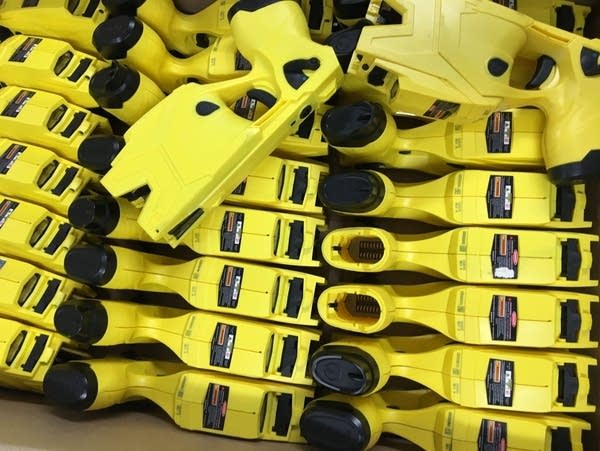Taser use down in both Minneapolis, St. Paul police

Taser guns used by the Minneapolis Police Department. While many law enforcement agencies say Tasers don't perform as well as the manufacturer claims, Twin Cities police departments don't measure the device's failures.
Brandt Williams | MPR News
Go Deeper.
Create an account or log in to save stories.
Like this?
Thanks for liking this story! We have added it to a list of your favorite stories.


